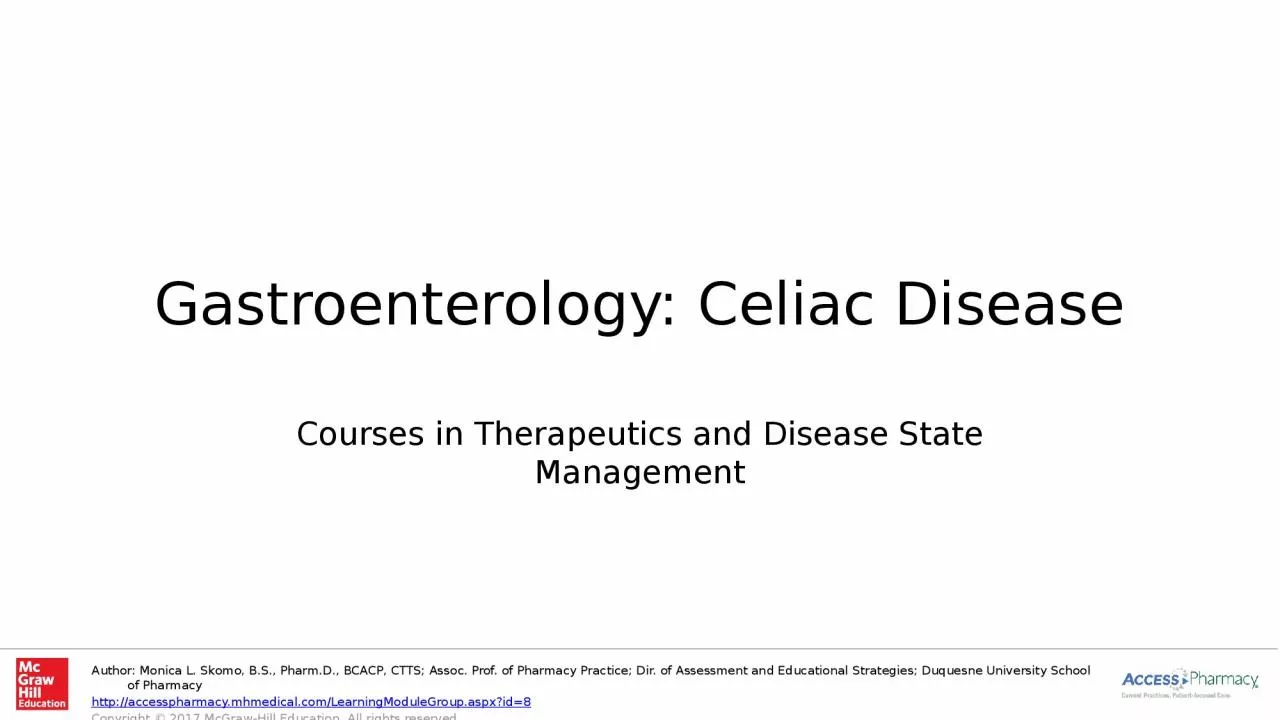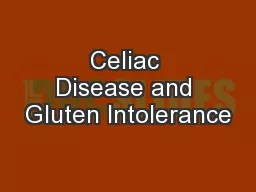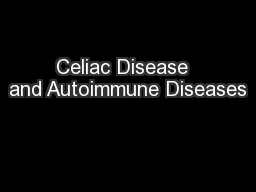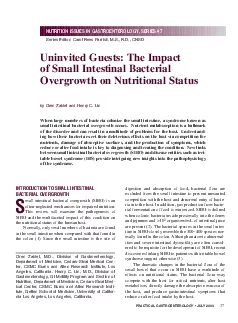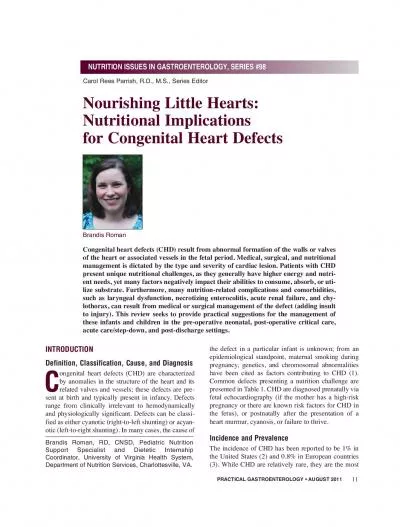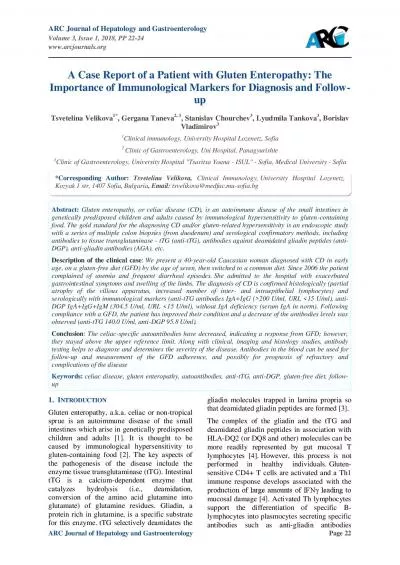PPT-Gastroenterology: Celiac Disease
Author : scarlett | Published Date : 2024-01-29
Courses in Therapeutics and Disease State Management Learning Objectives Discuss the etiology and pathophysiology of celiac disease Describe the gastrointestinal
Presentation Embed Code
Download Presentation
Download Presentation The PPT/PDF document "Gastroenterology: Celiac Disease" is the property of its rightful owner. Permission is granted to download and print the materials on this website for personal, non-commercial use only, and to display it on your personal computer provided you do not modify the materials and that you retain all copyright notices contained in the materials. By downloading content from our website, you accept the terms of this agreement.
Gastroenterology: Celiac Disease: Transcript
Courses in Therapeutics and Disease State Management Learning Objectives Discuss the etiology and pathophysiology of celiac disease Describe the gastrointestinal and extraintestinal symptoms of celiac disease. Presented by: Alex J. Swanson, M.S. . Alex J. Swanson, MS. Co-Owner of . Swanson Health Center in Costa Mesa, . CA. Founder of . iGreen. Nutrition. Masters in Applied Nutrition and Business Entrepreneurship from Northeastern University . Gluten Free Objectives: . To provide food consumers with evidence-based information about gluten, foods containing gluten and guidance on gluten free diets. To give consumers guidance on wisely spending food dollars to meet their dietary goals. Separating the wheat from the chaff. Charles P.B. Vanderpool, MD. Assistant Professor of Clinical Pediatrics. Celiac Disease (CD) vs Gluten Sensitivity (GS). http://noglutensolution.com/?p=571. Objectives. Diana Stuber, MA, RD, CDE. Joslin Diabetes Center. Upstate Medical University. Syracuse, NY. stuberd@upstate.edu. Joslin Diabetes Center 2012. Objectives. Discuss the spectrum of gluten-related disorders. I. David . Shocket, MD. Medstar Washington Hospital Center. June 12, 2016. Outline. Introduction. Autoimmune features of CD. CD and Autoimmune Diseases. Malignancy in CD. Screening in SD. 3. Let food be thy medicine and medicine be thy food. 27mall intestinal bacterial overgrowth SIBO is anNormally only small numbers of bacteria are foundorganisms/mL of intestinal juiceOvergrowth on Nutritional StatusNUTRITION ISSUES IN GASTROENTEROLOGY S diarrhea. from . childhood and . weight . loss. ,. Abdominal. distention . and . bloating. ,. idiopathic peripheral . neuropathy. ,. weakness. ,. fatigue,bone. pain. and with unexplained . iron-deficiency . disease is an immune-mediated . enteropathycaused. by a permanent sensitivity to gluten in genetically susceptible individuals. It occurs in symptomatic subjects with gastrointestinal and non-gastrointestinal symptoms, and in some asymptomatic individuals, including subjects affected by. e overall evidence grade was assessed based on the ratings for the following domains: study limitations, directness, consistency, precision, and reporting bias. Other domains that were considered Is there a blood test that can detect eliac isease in a person on a glutenfree diet?Unfortunately,we currently do not have any accurate testfor this situation. Genetic testing may be able to rule out COMMON SYMPTOMS What is Celiac Disease? TREATMENT OF CELIAC DISEASE: A GLUTEN-FREE DIET The only current treatment for celiac disease is simple: a lifelong gluten-free diet. There are no medications 11 Definition, Classification, Cause, and Diagnosis C ongenital heart defects (CHD) are characterizedby anomalies in the structure of the heart and itsrelated valves and vessels; these defects are pre Volume 3, Issue 1 , 201 8 , PP 22 - 24 www.arcjournals.org ARC Journal of Hepatology and Gastroenterology Page 22 A Case Report of a Patient with Gluten Enteropathy: The Importance of Immunologica Dr . Seyed. Farshad Allameh. Tehran University of Medical Sciences. Diagnosis of celiac disease . Celiac disease is a small bowel disorder characterized by mucosal inflammation, villous atrophy, and crypt hyperplasia, which occur upon exposure to dietary gluten and demonstrates improvement after withdrawal of gluten from the diet..
Download Document
Here is the link to download the presentation.
"Gastroenterology: Celiac Disease"The content belongs to its owner. You may download and print it for personal use, without modification, and keep all copyright notices. By downloading, you agree to these terms.
Related Documents

